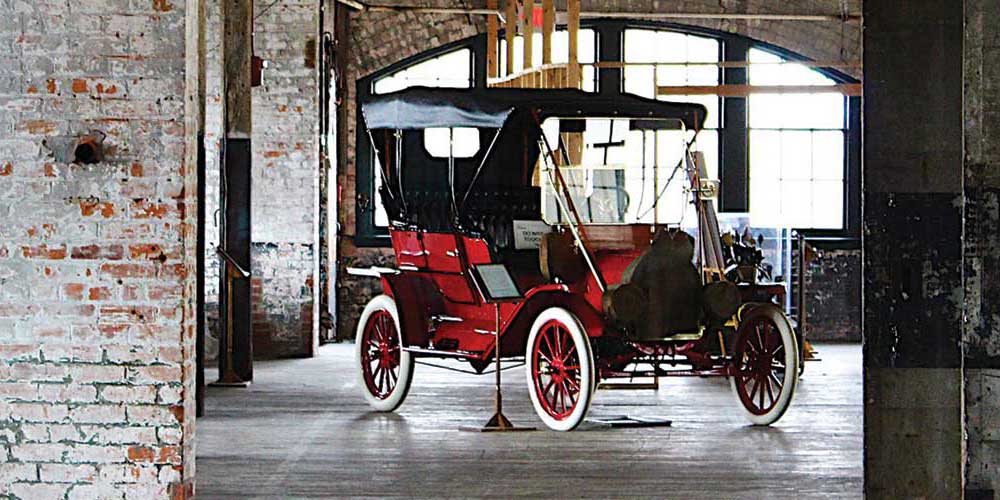By Robert Tate, Award-Winning Automotive Historian and Researcher
Images courtesy of Stellantis North America Archives, GM Media Archives, and Ford Motor Company Archives
Published 5.8.2024
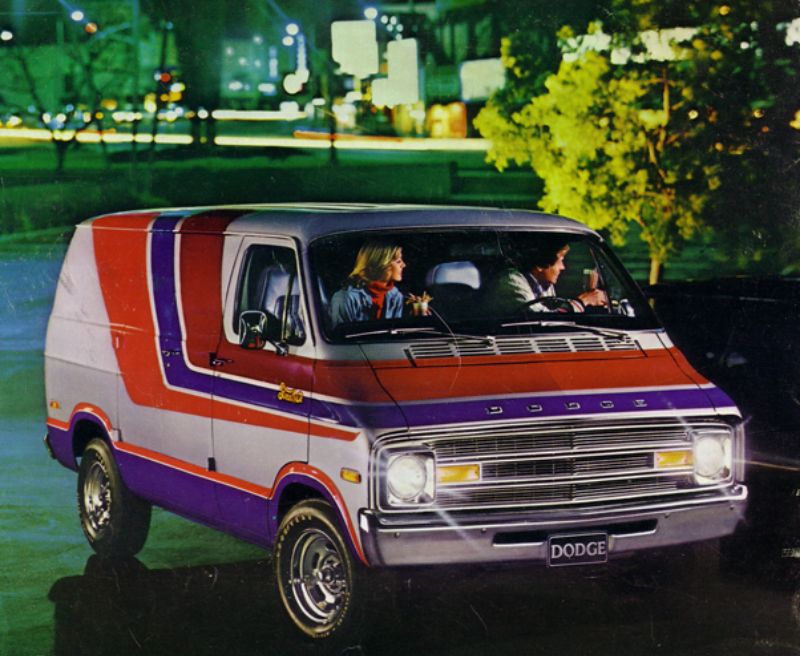 A 1970s Dodge Van (Stellantis North American Archives)
A 1970s Dodge Van (Stellantis North American Archives)
The 1970s offered rock and roll on wheels with the coolest and greatest looking customized American vans on the city streets and highways across America. During the 1970s when people were listening to popular hits like the married duo Captain & Tennille’s “Love Will Keep Us Together,“ they were driving their colorful customized vans.
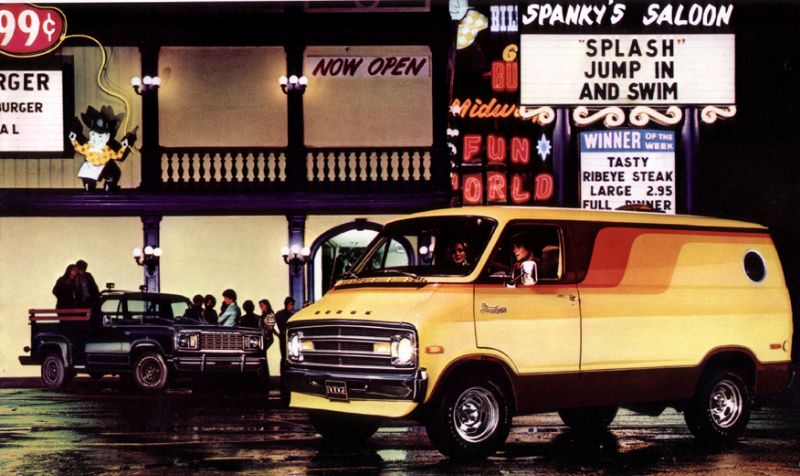 A 1970s Dodge custom van (Stellantis North American Archives)
A 1970s Dodge custom van (Stellantis North American Archives)
The 1970s brought change with both music and transportation. Interest in vans was driven by the younger generation. Some vans of the era offered pinstriping with colorful rainbow color graphics. Others reflected pop culture, including the movie “Star Wars,” one of the highest grossing films in history.
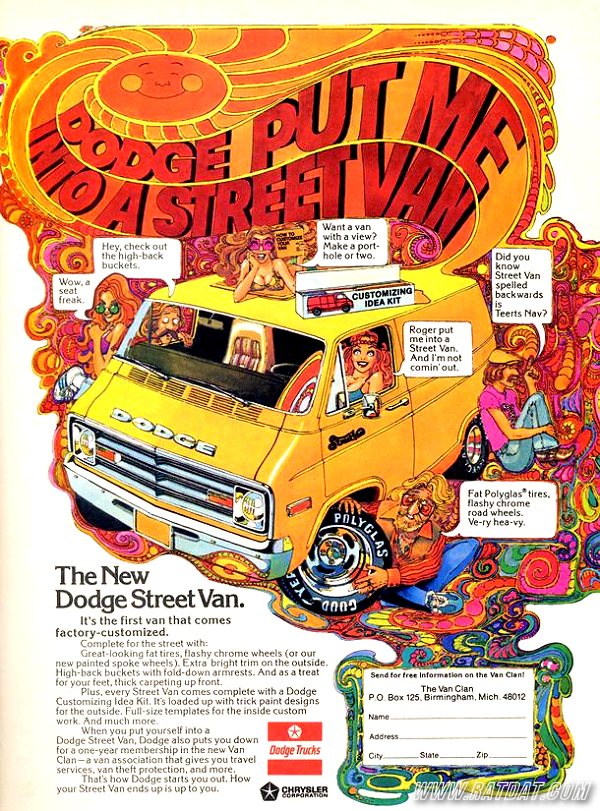 A 1970s Dodge Van ad (Stellantis North American Archives)
A 1970s Dodge Van ad (Stellantis North American Archives)
On February 28, 1975, Ford Motor Company made truck history by introducing the first all-new family of Ford Econoline vans, along with the popular club wagons. Some historians have said that the vans were the industry’s first vehicles of their type to feature a body-frame rather than unitized construction.
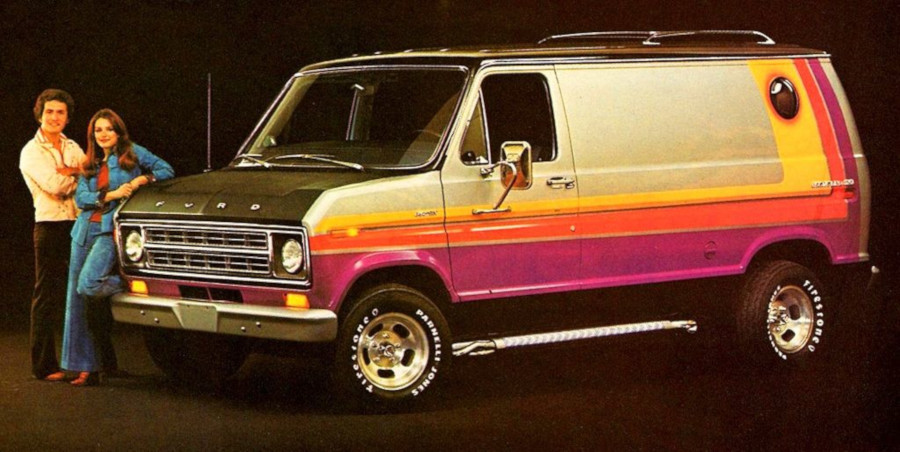 A 1970s Ford van (Ford Motor Company Archives)
A 1970s Ford van (Ford Motor Company Archives)
James K. Wagner, author of “Ford Trucks Since 1905” said that, “Due to the effects of the Econoline launch, the company relinquished first place in truck sales to Chevrolet this year.”
1976 was the first year that Ford manufactured a complete factory-produced and warranted youth van known as the Cruising van. It offered a multi-color paint scheme that attracted many young buyers to Ford dealerships.
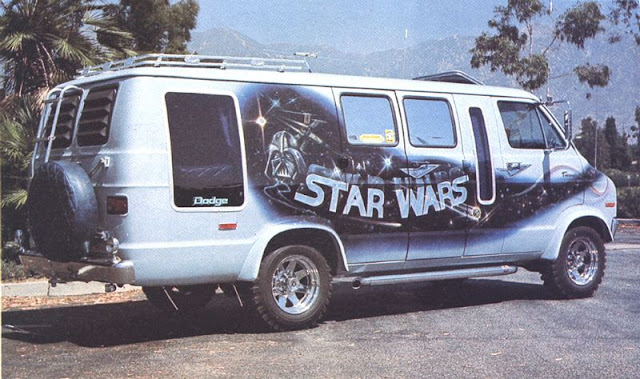 A 1970s Dodge "Star Wars" van (Vintage Vans)
A 1970s Dodge "Star Wars" van (Vintage Vans)
During the 1970s, the popular Dodge minivan had not yet arrived on the scene, however, the van generation of the 1970s offered shiny side pipes with a mellow sound system, carpeting and most importantly, the psychedelic artwork, airbrushed on both sides of the vans that became very popular. Dodge introduced many stylish vans in the decade with great-looking graphics as well.
When Dodge introduced their first-generation Dodge vans made between 1971 and 1978, they were called the B-vans. Dodge had separated their vans into the commercial tradesman series that became very popular among consumers. According to auto historians, the Dodge B-series vans were made from 1971 to 2003. The B series introduced the Sportsman van model, along with the Tradesman model series.
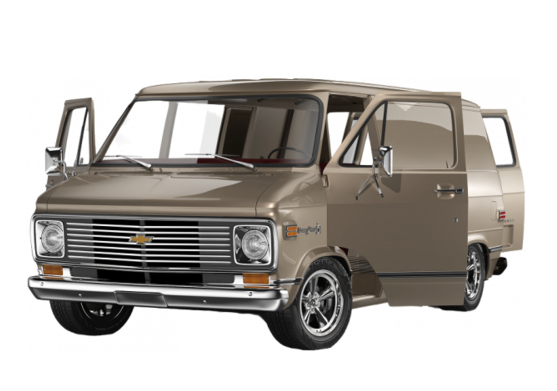 A 1970s Chevrolet van (GM Media Archives)
A 1970s Chevrolet van (GM Media Archives)
In 1976, Dodge introduced the YH3 street van package that became very popular with the younger generation and drove sales increases. The YN3 street model vans were also popular. However, Dodge discontinued these van packages after 1981 as the culture was changing. Truck historians have said that the B-series vans featured a one-piece welded uniframe design, which made the vehicles lighter and stronger than previous models. The younger generation loved them.
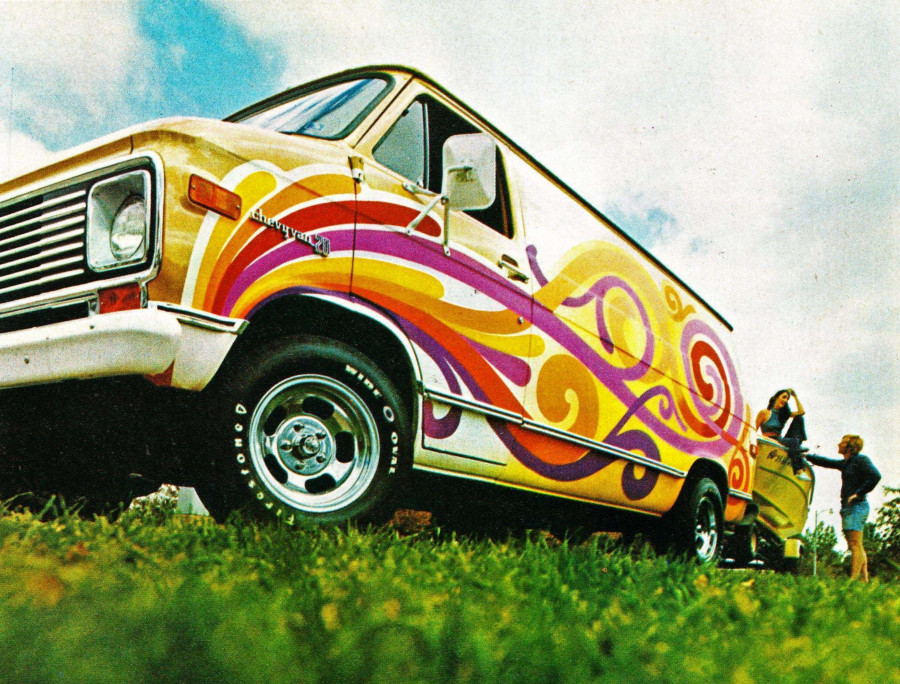 A 1970s Chevrolet van (GM Media Archives)
A 1970s Chevrolet van (GM Media Archives)
The 1970s Chevrolet vans were very well-received by the younger generation. In 1971, Chevrolet introduced the Series 30 Van. The new models introduced sliding doors on the sides that were featured on the Series 10 or the ¾-ton Series 20 model. The Chevy vans from the 1970s offered a wild painted colorful side illustrations that appealed to younger drivers and inspired many cultures to showcase their new vans.
The Chevrolet vans, along with those from Dodge and Ford, were a blast from the past that captured the cool 1970s iconic truck models and will always be a part of our American car culture.
Bibliography
Fitzgerald, Craig. “Van Life: The Coolest Vans of the 1970s.” BestRide.com Entertainment News.
Wagner, James K. “Ford Trucks Since 1905.” Crestline Publishing, 1978.
Hunkins, Johnny. “1977 Dodge Street Van: The Shaggin Wagon!” Hot Rod Magazine, November 23, 2021.


